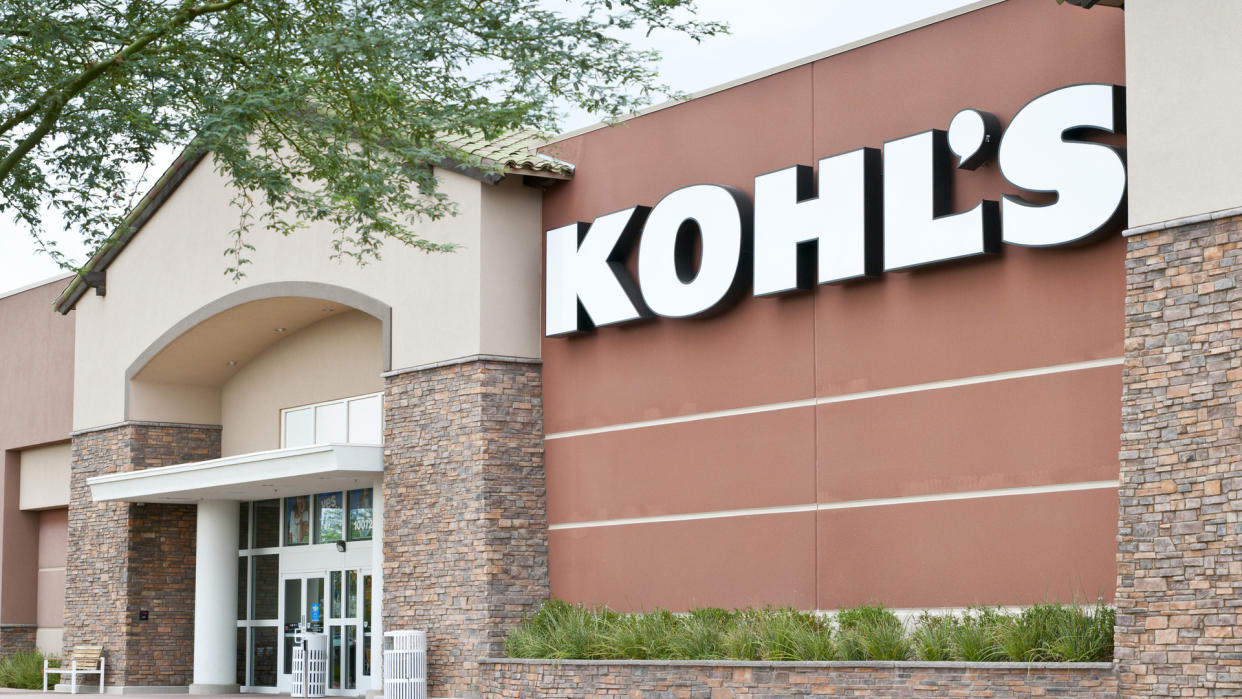How Much Is Kohl’s Worth?

Kohl’s department stores present shoppers with products ranging from clothing, shoes and accessories to beauty products, furniture, home decor and more. Betrothed couples and new parents can also take advantage of its registry services. Although the store offers the same kinds of products as many other big retailers, it has struggled more than some since the beginning of the pandemic. The following breakdown can help investors understand Kohl’s market presence and whether to invest in the company.
About Kohl’s | |
|---|---|
Headquarters | Menomonee Falls, Wis. |
Year Founded | 1962 |
CEO Michelle Gass’ Salary (2021) | $1.468 million base pay |
What Kohl’s Is Worth | |
|---|---|
Share Price, 52-Week Range | $26.07-$64.38 |
2021 Revenue | $19.433B |
2021 Profit | $938M |
GOBankingRates’ Evaluation of Kohl’s Net Worth | $16.33B |
Kohl’s Market Cap: $3.84B
Investors use market capitalization, or market cap for short, to gauge a company’s worth, and the market cap is really just the value of all the company’s stock combined. As of Aug. 19, Kohl’s market cap is $3.84 billion based on a share price of $29.89.
Kohl’s Net Worth: $16.33B
Market cap gives investors an idea of a company’s worth, but with a caveat: Share prices change day to day, which means a bad trading day could throw off the company’s valuation.
The GOBankingRates Evaluation of a company’s net worth, however, considers factors like profit and revenue. The resulting value is more conservative but based on concrete figures.
Based on Kohl’s revenue and profits from the last three years and its assets and debts, Kohl’s is worth $16.33 billion.
Past and Present Challenges
The early 2000s saw Kohl’s greatly expand its physical footprint from 76 stores in the Midwest in 1992 to an additional 28 stores in California alone in 2003, plus more in the Northwest and South in the years that followed. Kohl’s hasn’t been immune to competition from online retailers, however. The company’s then-CEO, Kevin Mansell, acknowledged planned store closures in 2016, according to CNBC.
In the year or two prior to the pandemic, Kohl’s responded to reduced customer traffic by trimming its inventory and taking advantage of back-to-school shopping trends. Department stores continued to navigate the disruptive aspect of online shopping, but Kohl’s strategy of maximizing prime inventory appeared to help its share prices.
Then COVID-19 hit, forcing temporary store closures and putting 85,000 Kohl’s employees on furlough.
It goes without saying that the pandemic dealt Kohl’s a major blow in 2020, driving net sales down 20.4% compared to 2019. The retailer finished the year $163 million in the red following a staggering 124% decline in profits from the 12 months prior.
In 2022, Kohl’s is still struggling — this time with inflation. The company reported that consumers have cut back on their purchases of items such as apparel and other products that fall under discretionary categories. According to CNBC, it was forced to cut its revenue outlook for the full fiscal year to a 5% to 6% decline, from a previously expected range of flat to up 1%. Earnings estimates were cut even further, to a range of $2.80 to $3.20 vs. its previous guidance of $6.45 to $6.85.
While the company’s forward outlook was grim, actual results for Q2 2022 were similarly bleak. Overall sales in the quarter fell 8.1%, while same-store sales fell 7.7%, according to CNBC. Lower sales also dramatically increased inventory by 48%.
As CNBC reported, one of the company’s few bright spots was its beauty division, where customers continued to buy cosmetics and other beauty products. This could be a boon for the company going forward, as it has begun the process of opening an additional 650 in-store Sephora locations by the end of 2023. Share repurchases will also remain robust, with the company announcing an accelerated share repurchase program to buy back approximately $500 million in common stock.
Kohl’s stock has a consensus “buy” rating from 12 analysts following the stock, but price forecasts are tepid. The average 12-month target is $32.86, just about 10% above current levels, while the range of estimates falls between $19 and $44.
Kohl’s History and Investors
Kohl’s founder Max Kohl started a grocery store chain in 1946, and in 1962 established the first Kohl’s department store in Brookfield, Wisconsin, a short distance away from today’s Kohl’s headquarters in Menomonee Falls, Wisconsin. Max Kohl’s son Herb helped run the family business, becoming its president in 1970, until Batus Inc., the U.S. division of British American Tobacco, took complete control of the company in 1978.
Kohl’s went public in 1992. The company launched Kohls.com in 2001. It operates more than 1,100 stores in 49 states and has its own retail credit card.
Kohl’s shareholders primarily include large financially focused companies such as Vanguard, BlackRock Inc., T. Rowe Price and JPMorgan Chase, which are among its largest shareholders.
John Csiszar and Daria Uhlig contributed to the reporting for this article.
Data is accurate as of Aug. 19, 2022, and is subject to change.
Methodology: The GOBankingRates Evaluation assesses a company’s net worth based on the company’s total assets, total liabilities, and revenue and net income from the last three years. Base value is established by subtracting total liabilities from total assets from the company’s last full fiscal year. Income value is established by taking the average of the revenue from the last three full fiscal years, plus 10 times the average of the net profits from the last three full fiscal years, and then calculating the average of those two figures. The final GOBankingRates Evaluation number is the sum of the base value and the income value.
This article originally appeared on GOBankingRates.com: How Much Is Kohl’s Worth?
